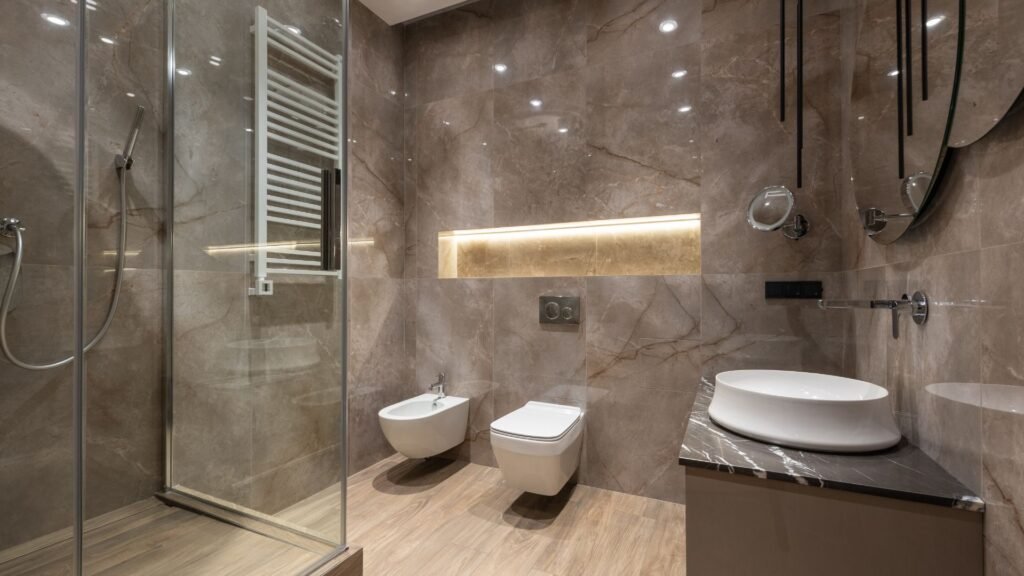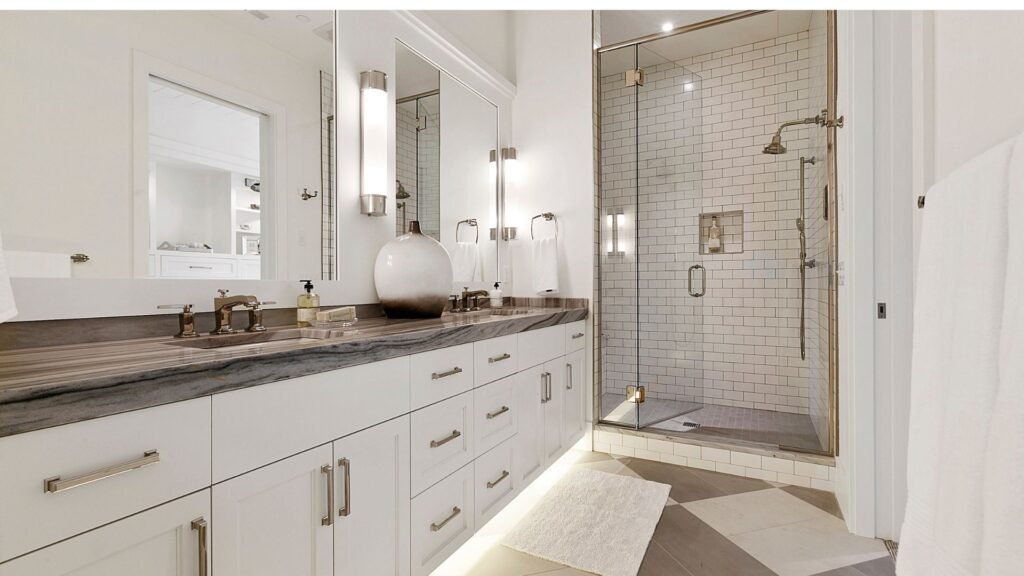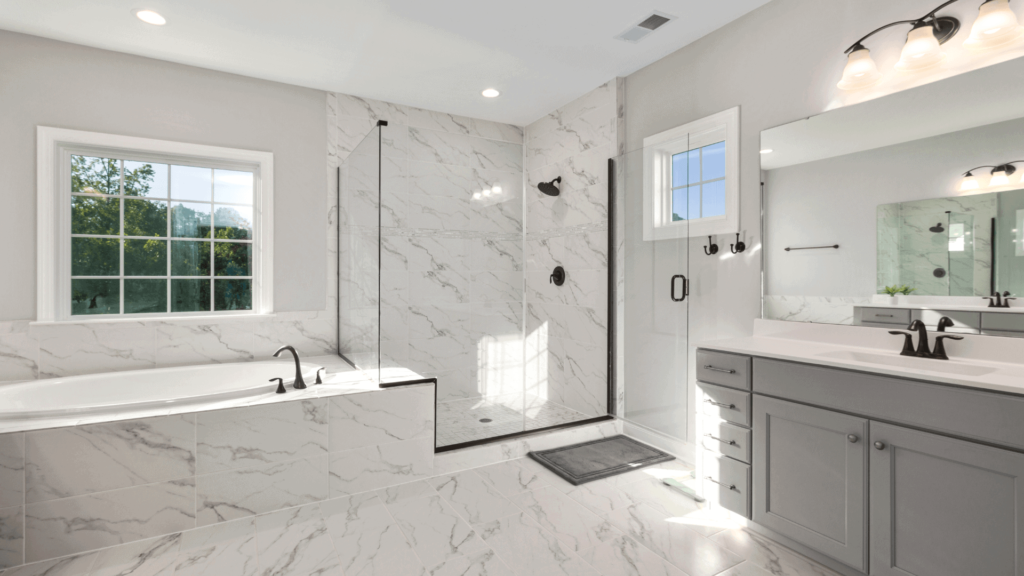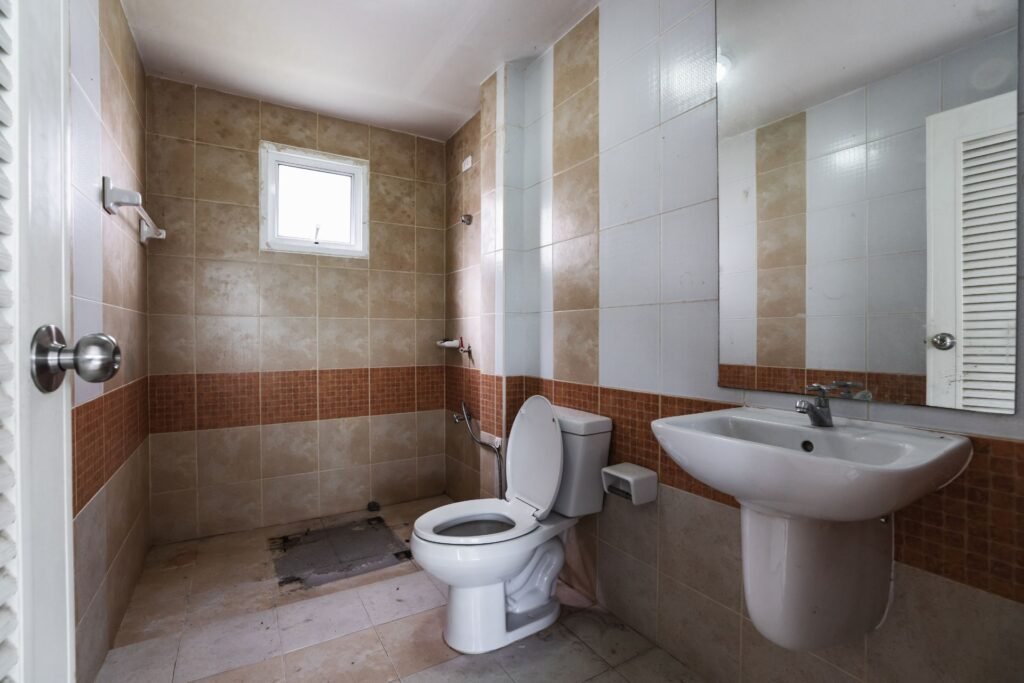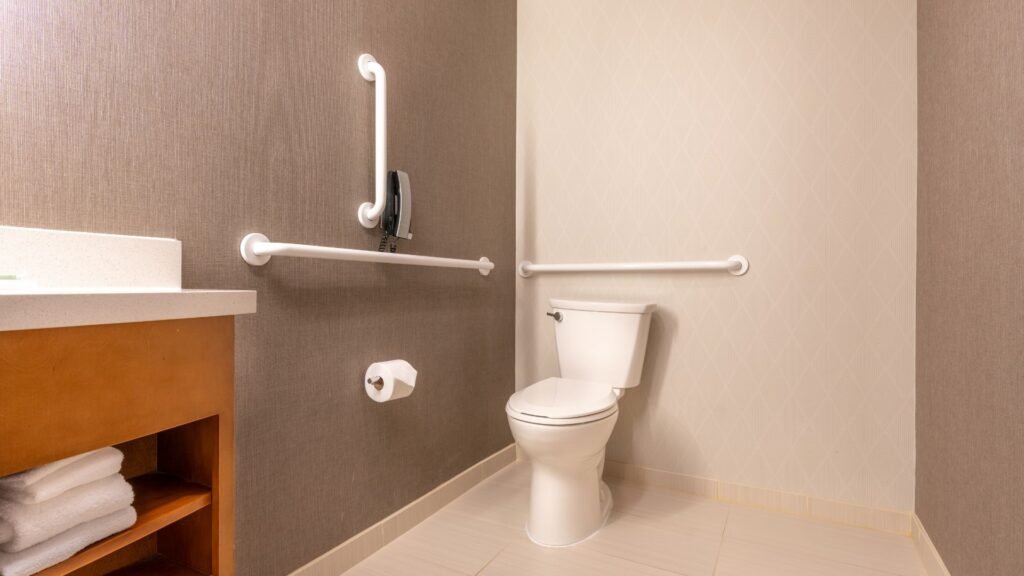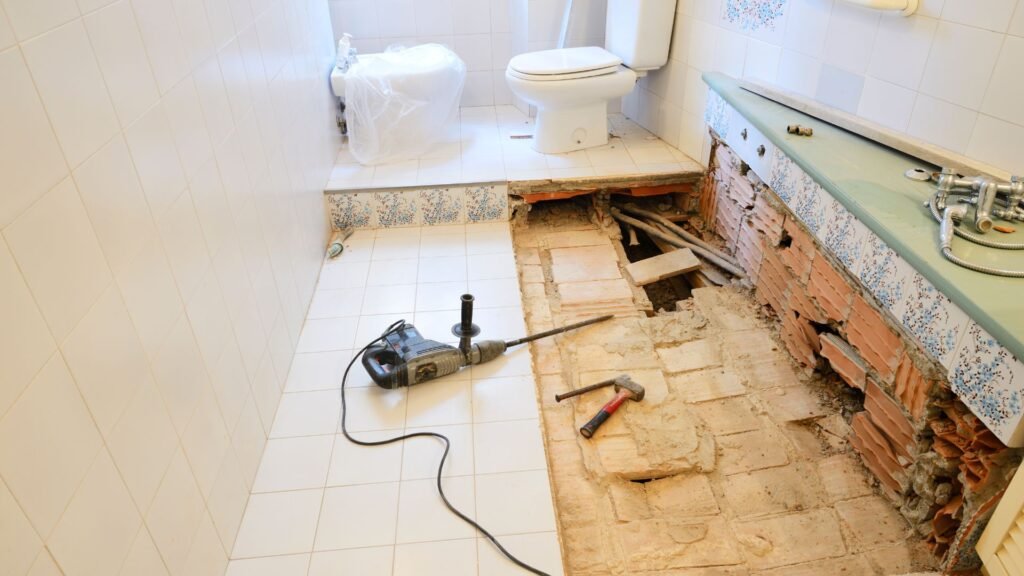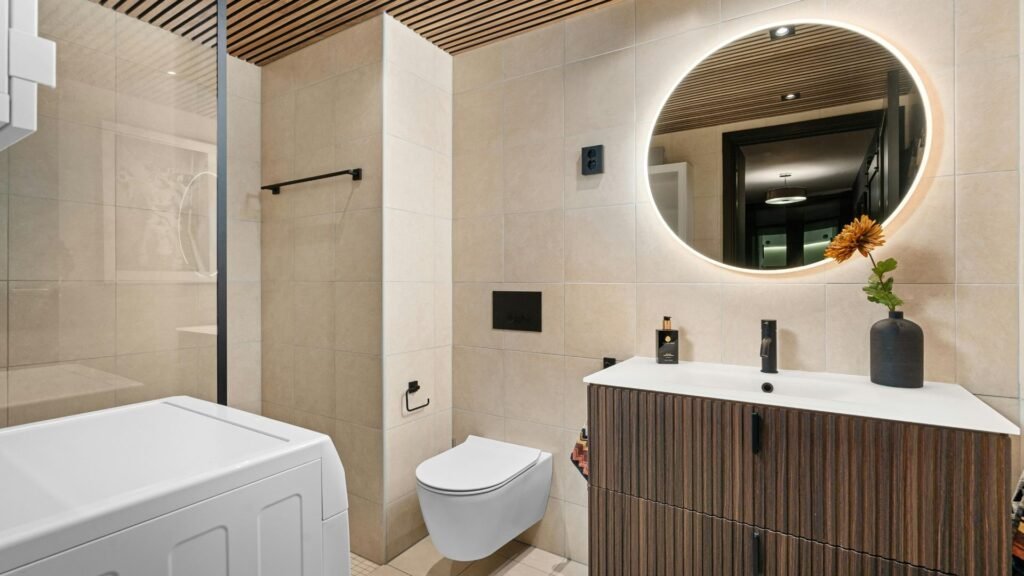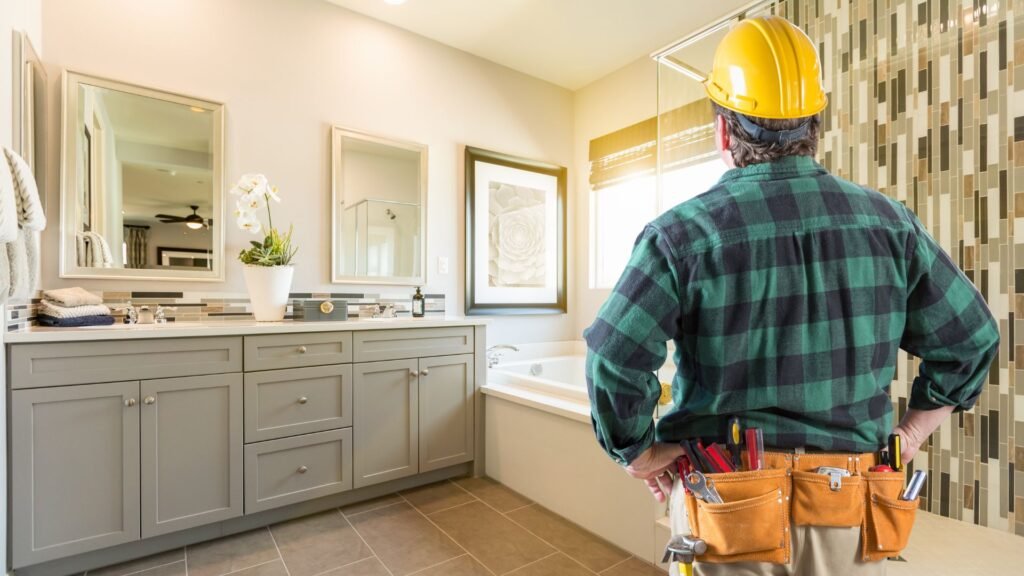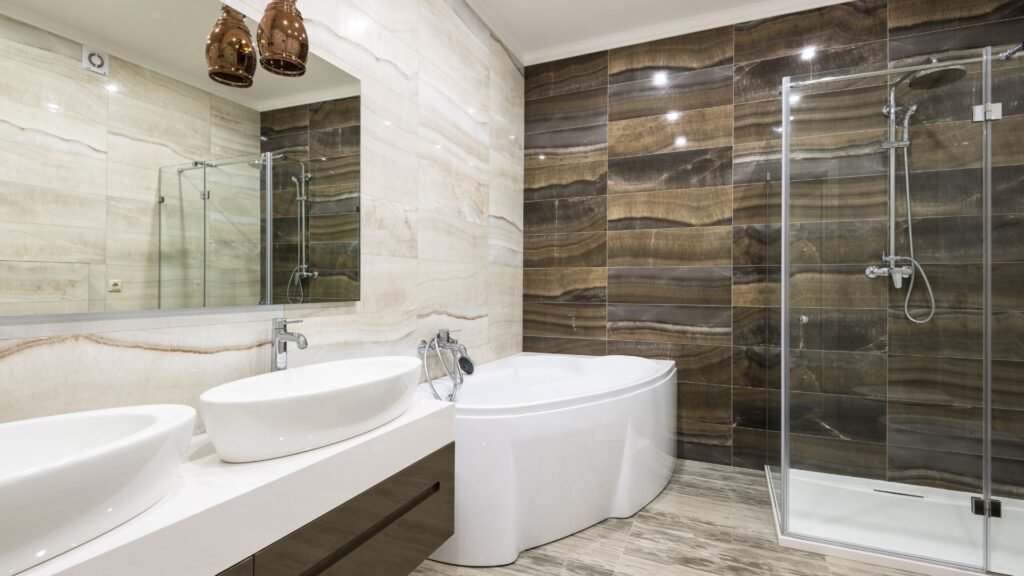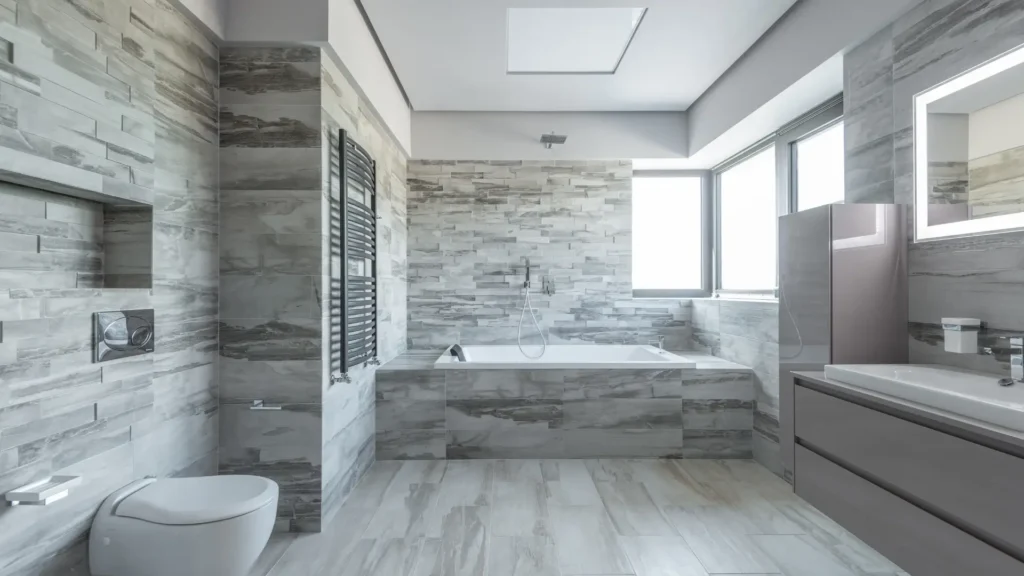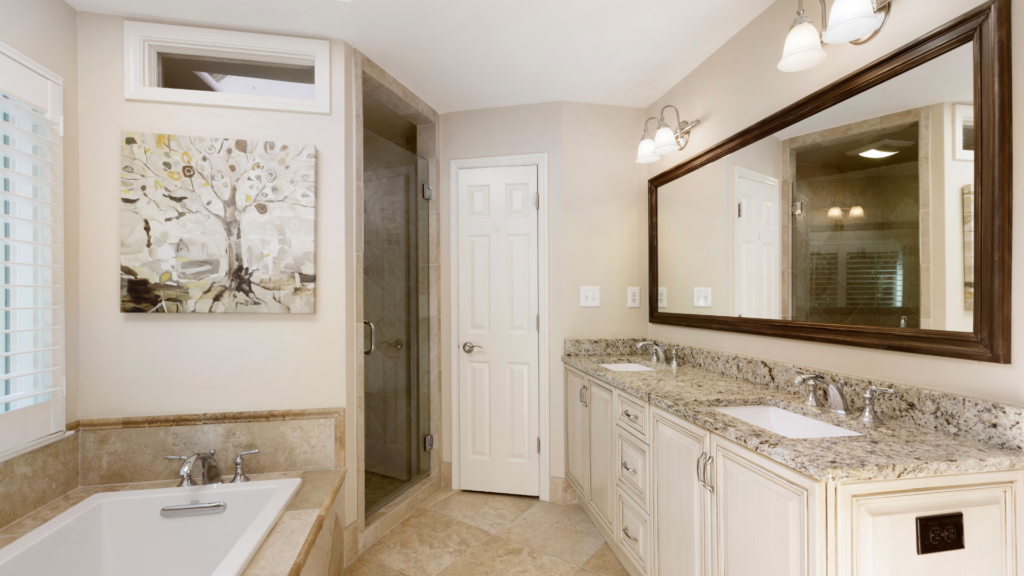Welcome to your go-to guide on Seratone bathrooms in NZ, a modern, moisture-resistant wall lining solution that’s becoming a top choice for Kiwi homeowners. Whether you’re renovating an old bathroom or designing a new one, Seratone offers a clean, stylish, and low-maintenance finish that fits both your budget and lifestyle. In this article, you’ll discover what Seratone is, why it’s gaining popularity across New Zealand, how it compares to other wall options, and what to expect in terms of cost, design, and installation. If you want a bathroom that looks great and stands up to everyday use, keep reading.
A Seratone bathroom in NZ uses moisture-resistant wall panels made from high-pressure laminate to create a sleek, low-maintenance finish. Popular for their easy installation and modern look, Seratone panels are ideal for wet areas like showers and laundries, offering a cost-effective alternative to traditional tiles.
Table of Contents
What Is Seratone?
Seratone is a pre-finished wall lining system designed specifically for wet areas like bathrooms, showers, and laundries. In New Zealand, it’s widely recognized for offering a sleek, modern alternative to traditional tiles or painted walls. What makes Seratone stand out is its ability to combine function and style, giving Kiwi homeowners a moisture-resistant, low-maintenance surface that still looks clean and contemporary.
Manufactured By Laminex New Zealand
Seratone is produced by Laminex New Zealand, a trusted name in building materials known for its range of decorative surfaces. The brand has a strong presence across the country and is a go-to for architects, builders, and DIY homeowners who value both quality and design. You can view their product catalogue or explore finishes by visiting Laminex NZ’s official Seratone page.
What Seratone Is Made Of
Seratone panels are constructed using high-pressure laminate (HPL), which is bonded to a backing surface, commonly over a Medium Density Fibreboard (MDF) or a composite core. This material choice gives the panel strength, dimensional stability, and a smooth outer surface. The laminated face is non-porous and hygienic, making it ideal for rooms that are exposed to moisture and frequent cleaning.
Key Features Of Seratone Panels
- Water Resistance: Seratone is specifically engineered for wet environments. It prevents moisture from seeping through walls, helping reduce the risk of mold or structural damage.
- Easy To Clean: The panels have a non-porous surface that resists grime and soap scum. A quick wipe with a soft cloth and mild cleaner is usually enough to keep it spotless.
- Durability: Unlike tiles, Seratone has no grout lines to maintain. Its surface is scratch-resistant and can handle daily wear and tear in busy homes.
- Design Variety: Seratone comes in a wide range of colours and finishes, from soft neutrals to bold tones. This allows homeowners to match their panels with the rest of their interior design.
- Quick Installation: The panels are designed to slot together with trims, making them easier and faster to install compared to tiling.
Seratone Product Ranges
Laminex NZ offers different Seratone ranges to suit varying needs and budgets:
- Seratone Classic: The original range that includes solid colours and soft textures. It’s popular in residential bathrooms for its clean, simple aesthetic.
- Seratone Aqua: Designed specifically for high-humidity environments like showers and laundries. It includes improved joining systems and additional water protection.
- Other Ranges: From time to time, Laminex introduces new patterns, textures, or finishes to meet design trends. Checking their site or catalog is the best way to explore the latest options.
Whether you’re building new or renovating, Seratone provides a smart solution for anyone wanting a durable and stylish finish in wet areas. Its strong presence in New Zealand homes is a testament to its reliability, ease of use, and design flexibility.
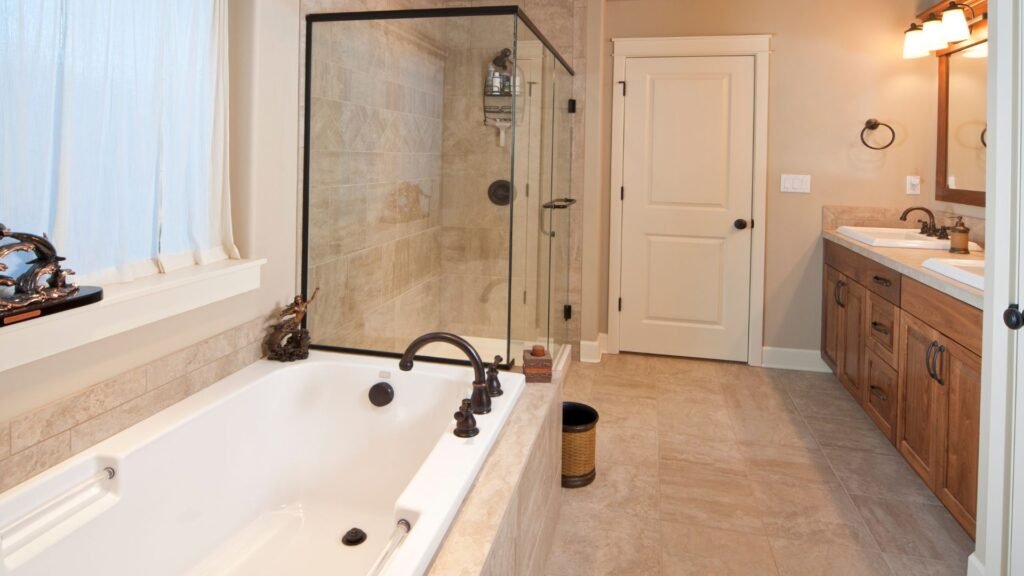
Why Homeowners In NZ Are Choosing Seratone Bathrooms
Seratone wall panels are becoming a popular choice among New Zealand homeowners, and for good reason. Designed to perform well in wet environments, Seratone is changing how Kiwis approach bathroom renovations and new builds. Its unique blend of practicality, affordability, and clean aesthetics makes it a reliable alternative to traditional materials like tiles or paint. Here’s a closer look at why Seratone bathrooms are trending across NZ homes.
Suits New Zealand’s Moisture-Prone Climate
New Zealand homes often deal with high humidity, especially in coastal and rural regions. Bathrooms are already the most moisture-heavy part of any home. Seratone is built to handle this challenge. The panels are moisture-resistant, meaning they prevent water from seeping through and causing damage behind the walls. This feature helps stop common issues like mold, mildew, and rot, problems that are costly to fix and harmful to health. For homeowners in damp regions, Seratone provides a solid layer of protection.
Works Well In Both New Builds And Renovations
Whether you’re building from scratch or giving your old bathroom a much-needed refresh, Seratone fits the bill. It’s easy to install and flexible enough to work in different layouts and wall shapes. Builders and renovators often recommend it because it simplifies the process, especially for tight deadlines. For renovators, Seratone can be installed over existing surfaces in many cases, saving time and effort.
More Cost-Effective Than Traditional Tiles
Tiling a bathroom can be expensive. Not just the tiles themselves, but also the grout, adhesive, waterproofing, and labor add to the cost. Seratone wall panels, on the other hand, reduce those costs significantly. You’re buying fewer materials, and the installation is faster, meaning fewer labor hours. Homeowners looking for a modern look without blowing their budget often choose Seratone as a smart alternative.
Saves Time With No Grouting Required
One of the standout benefits of Seratone is that it doesn’t require grouting. Grout is one of the biggest pain points with tiled bathrooms, it takes time to apply and even more effort to maintain. Over time, it can stain, crack, or grow mold. Seratone panels eliminate this issue. Installers simply fix the panels into place and seal the joins. This not only cuts installation time in half but also reduces future maintenance headaches.
Real-World Examples From Kiwi Homes
Many New Zealanders have already made the switch to Seratone bathrooms and shared their positive experiences. Case studies from Laminex NZ and home renovation blogs show Seratone being used in everything from small apartment bathrooms to larger family homes. In these stories, homeowners often mention the ease of cleaning, the modern finish, and the durability of the panels as standout features. Some even note how guests compliment the seamless, stylish look.
Easy To Scan Features Of Seratone Bathrooms
- Water-resistant surface ideal for NZ homes
- Suitable for new builds and renovation projects
- No grout lines mean faster cleaning
- More affordable than ceramic tiling
- Smooth, modern finish that fits most bathroom styles
- Available in various colors and textures
- Helps reduce mold growth and moisture damage
- Quick installation by professionals or DIYers
- Compatible with trims for a seamless look
- Backed by trusted brands like Laminex NZ
By choosing Seratone wall panels NZ homeowners are not just investing in convenience, they’re also making a smart, long-term decision that enhances the value and functionality of their bathrooms. Whether you’re browsing seratone bathroom ideas or planning a full renovation, this solution delivers the performance and style that modern Kiwi families expect.

How Seratone Compares To Tiles, Acrylic, And Paint
When planning a bathroom renovation in New Zealand, one of the key decisions is choosing the right wall finish. Options like Seratone, ceramic tiles, painted walls, and acrylic liners all have their own advantages and drawbacks. Each material offers different levels of durability, aesthetics, cost, and installation difficulty. Understanding how they compare can help you make the best choice for your budget, design goals, and long-term use.
Durability
Seratone is known for its resistance to moisture, mould, and stains. It’s made from a high-pressure laminate that holds up well in humid environments. This makes it perfect for wet zones like showers, laundries, and full bathrooms.
Ceramic tiles are also extremely durable, especially when sealed properly. They can last for decades with minimal wear but may crack if improperly installed or exposed to impact.
Painted walls, while affordable, tend to wear down faster in wet environments unless you use specialty bathroom paint. Even then, peeling or bubbling can occur over time due to humidity.
Acrylic liners are durable and water-resistant but can scratch easily and may become discoloured over the years. Their durability depends largely on the quality of the material and how it’s maintained.
Installation
Seratone panels are easier and faster to install compared to tiles. They come in large sheets, which reduce seams and eliminate the need for grouting. A professional can install a full bathroom in a shorter time, and skilled DIYers often manage it themselves.
Ceramic tile installation is time-consuming and requires expertise. Laying, spacing, and grouting tiles takes precision and care. Mistakes can lead to leaks or cracked tiles later.
Paint is the easiest to apply, making it a common choice for DIY projects. However, it doesn’t offer the same protection against moisture and usually requires more frequent maintenance or reapplication.
Acrylic liners fall somewhere in between. They’re relatively easy to install but often require professional help to get a clean, watertight seal, especially around corners and joints.
Cost
Seratone is more cost-effective than ceramic tiles and offers great value for money. You save on both material and labour since it installs quickly and doesn’t require grout or sealing.
Ceramic tiles are usually the most expensive option due to both the cost of tiles and the labour-intensive installation process.
Paint is the cheapest upfront option, but it’s also the least durable. Over time, maintenance and repainting can drive up long-term costs.
Acrylic liners are moderately priced. They’re cheaper than tiles but more expensive than paint. The price varies depending on the size of the bathroom and the complexity of the design.
Aesthetics
Seratone offers a clean, contemporary look that suits minimalist and modern bathroom styles. It comes in a range of finishes and colours, including matte, gloss, and natural-look designs like woodgrain and stone.
Ceramic tiles provide the most design flexibility. You can choose from endless colours, sizes, textures, and patterns. This makes them ideal if you’re aiming for a custom or high-end look.
Painted walls can be styled to fit almost any colour scheme, but they lack the texture and visual impact of tiles or panels.
Acrylic liners tend to be more basic in appearance. While some come in decorative finishes, most are plain and function-first rather than design-focused.
Ideal Use Cases
Seratone works best in full wet areas, such as bathroom walls, showers, and laundries. It’s designed to perform well under high humidity and frequent water exposure.
Ceramic tiles are ideal for homeowners who want high-end custom looks and long-term durability in both wet and dry areas.
Painted walls may be fine for powder rooms or toilet spaces where moisture isn’t a major concern.
Acrylic liners are commonly used in rental homes or quick renovations where budget and speed matter more than style.
Comparison Table: Seratone vs Tiles vs Paint vs Acrylic
| Feature | Seratone | Ceramic Tiles | Painted Walls | Acrylic Liners |
| Durability | High | Very High | Low | Moderate |
| Water Resistance | Excellent | Excellent | Low to Moderate | Good |
| Installation | Easy / Fast | Difficult / Slow | Very Easy | Moderate |
| Cost | Moderate | High | Low | Moderate |
| Aesthetic Range | Moderate | Extensive | Wide (limited texture) | Limited |
| Best For | Wet areas | High-end designs | Low-moisture rooms | Budget-friendly wet areas |
This breakdown gives a clear overview of how each material performs in key areas that matter to homeowners. While each option has its place, Seratone stands out as a practical, stylish, and cost-effective solution for New Zealand bathrooms.
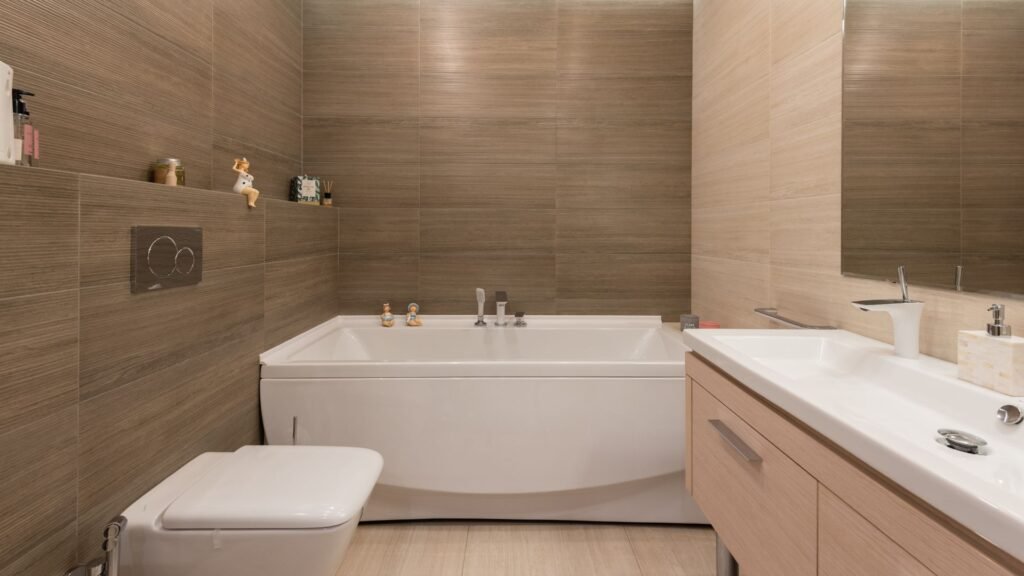
How Is Seratone Installed?
Installing Seratone wall panels in a bathroom is a straightforward process when done correctly. These panels are designed to save time and effort compared to traditional tiling, making them popular among both DIY enthusiasts and professional installers. Whether you’re renovating an old bathroom or building a new one, understanding the full installation process helps you avoid costly mistakes and ensures a clean, long-lasting finish.
Overview Of The Installation Process
The installation begins by preparing the wall surfaces. They must be clean, dry, flat, and free from dust or grease. Any uneven areas should be sanded or filled to provide a smooth surface for the panels to adhere to. Once the surface is prepped, installers usually begin from one corner of the bathroom and work their way across the wall. Seratone panels are fixed using a combination of adhesive and mechanical fasteners. The panels are then sealed using matching trims and waterproof joiners to prevent moisture from seeping behind the wall. Careful attention must be given to the joins, especially in shower areas, to ensure the panels stay watertight.
DIY Vs Professional Install
Seratone is marketed as a DIY-friendly product, and many homeowners choose to install it themselves to cut costs. However, successful installation depends on precision, patience, and having the right tools. DIY installation may suit someone with basic carpentry experience, but first-time users may find aligning panels and trimming corners more difficult than expected. Hiring a licensed builder or bathroom installer guarantees professional results, especially in high-moisture zones like shower walls. Professionals also ensure compliance with New Zealand building standards, which is important for both safety and long-term durability.
Tools Needed And Common Mistakes
For a proper Seratone installation, you’ll need the following tools:
- Circular saw or fine-toothed handsaw
- Measuring tape and pencil
- Adhesive suitable for wall linings
- Silicone sealant and caulking gun
- Panel joiners and edge trims
- Spirit level and straight edge
One of the most common mistakes made during installation is failing to level the panels accurately. Misaligned joins or uneven cuts can result in gaps, which allow water to seep behind the panels and cause long-term damage. Another issue is using the wrong type of adhesive or applying too much pressure during fitting, which can lead to warping or cracking. It’s also easy to overlook sealing the corners and trims properly. Any gaps around edges, taps, or showerheads can let moisture in, defeating the purpose of using a water-resistant product.
Time Estimate For A Standard Bathroom
For a small to medium-sized bathroom, a DIY installation might take two full days, including preparation, panel cutting, and sealing. An experienced professional may complete the same job within one day, depending on the number of panels and wall angles involved. Complex layouts or irregular surfaces can extend the timeframe. It’s always best to plan for extra time if you’re doing it yourself to avoid rushing through important steps like sealing and trimming.
Consult A Licensed Builder For Safety
While Seratone is DIY-friendly, safety should always come first. Improper installation not only shortens the lifespan of the panels but can also result in moisture issues that affect your home’s structure. If you’re unsure about cutting panels accurately, sealing wet areas correctly, or following building code requirements, it’s best to consult a licensed builder. A professional can assess your space, recommend the right products, and ensure everything is installed to meet New Zealand standards. This is especially important if the bathroom is part of a resale or rental property, where code compliance and durability matter.
By understanding the full installation process and knowing when to call in the pros, you can enjoy the benefits of a clean, waterproof, and low-maintenance Seratone bathroom for years to come.
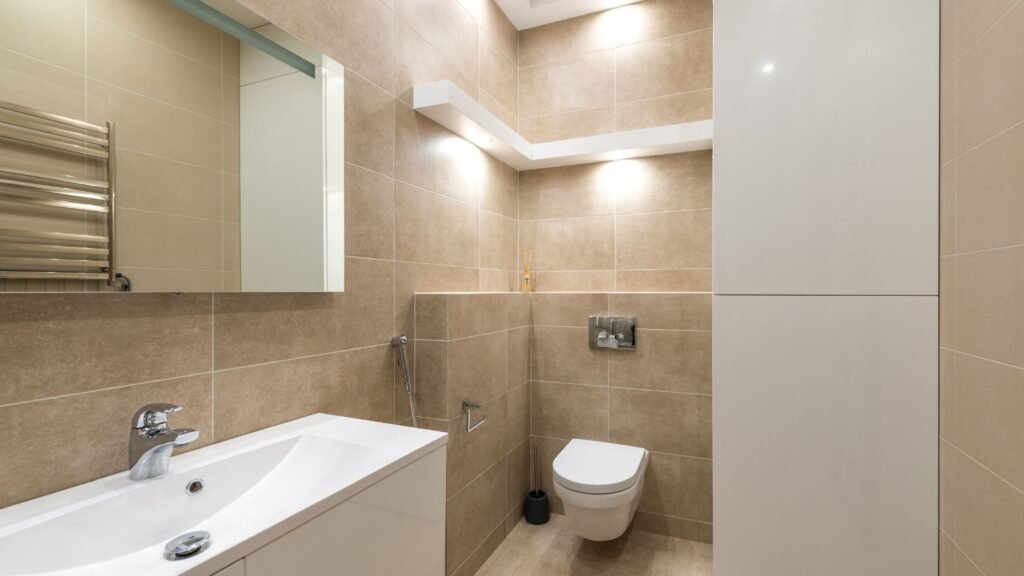
Seratone Design Options And Finishes
When choosing wall linings for your bathroom, design matters just as much as function. With Seratone bathroom wall panels, New Zealand homeowners get more than just a moisture-resistant solution, they also gain access to a wide range of stylish finishes that suit different interior tastes. Whether you’re planning a minimalist bathroom or a bold statement space, Seratone finishes NZ offer flexible design options that work with your vision.
- Available Colours, Textures, Gloss And Matte Finishes
Seratone panels come in a variety of colours and textures to suit both modern and traditional bathroom styles. Popular choices include crisp whites, soft neutrals, greys, and earth tones that complement natural lighting and NZ’s coastal settings. Some panels mimic natural surfaces like stone or timber, adding warmth and character without the maintenance those materials often require. You can choose between gloss and matte finishes, depending on your preference. Gloss finishes reflect light and create a clean, high-shine appearance, ideal for smaller bathrooms that need a brighter look. Matte finishes provide a softer, more subtle touch that works well in calming, spa-style designs. - Matching Trims And Joins For A Seamless Look
To complete the installation, Seratone offers a selection of trims and joiners that ensure a tidy and professional finish. These are available in matching or contrasting colours to complement your wall panels. Using matching trims enhances the overall appearance of your bathroom by reducing visual distractions, while contrasting trims can be used to define spaces or create a feature wall. Quality joins also protect against water leaks, making them functional as well as decorative. If you’re aiming for a high-end look, precise trim selection makes a noticeable difference. - Popular Styles In NZ Homes Today
In New Zealand, Seratone bathroom wall panels are increasingly used in modern homes, coastal baches, and compact apartments. Homeowners appreciate their clean lines and low-maintenance surface, which align with contemporary bathroom trends. Popular design styles include soft greys paired with timber vanities, crisp white walls matched with black fixtures, or neutral palettes accented with bold accessories. These styles not only look great but also increase appeal for future resale. - Design Tips: Minimalist, Coastal, And Contemporary Themes
Seratone panels are ideal for minimalist bathrooms, where simplicity and functionality are key. Stick to one colour throughout the space, or pair a neutral wall panel with a bold feature wall for contrast. For a coastal look, choose lighter tones such as white, pale grey, or sand-inspired finishes, and match them with natural wood elements. If you’re going for a contemporary vibe, consider matte black or charcoal Seratone finishes NZ paired with chrome or brushed nickel fittings. Whatever your design preference, Seratone makes it easy to achieve a cohesive look while keeping moisture resistance and easy maintenance at the core.
By understanding the design options and finishes available with Seratone bathroom wall panels, you can make informed choices that improve both the function and style of your space. Whether renovating or building new, these panels offer the flexibility, durability, and visual appeal that suit the needs of Kiwi homes.
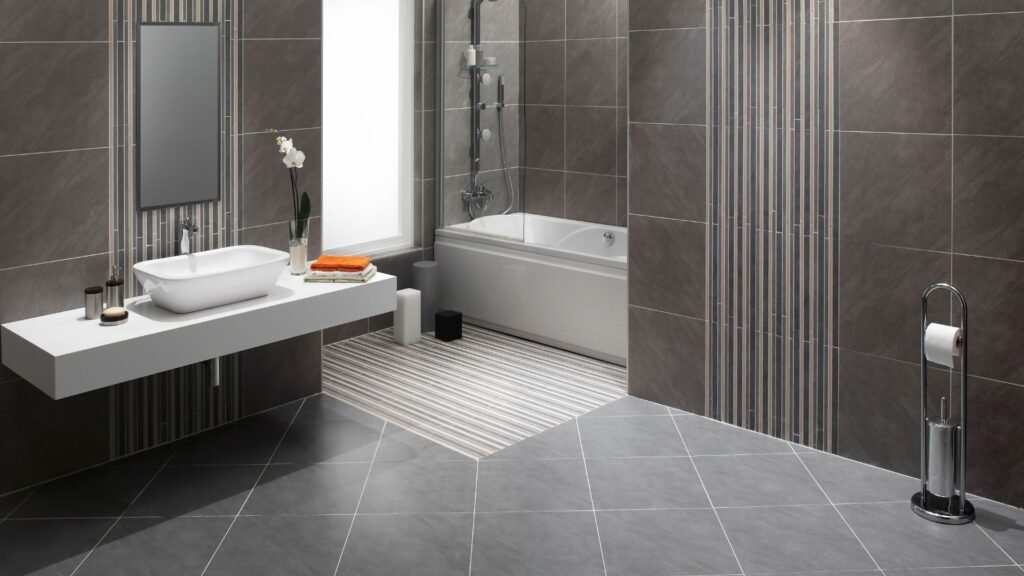
How Much Does A Seratone Bathroom Cost In NZ?
If you’re considering a Seratone bathroom for your home in New Zealand, cost is likely one of your top concerns. Seratone wall panels are known for their practicality, but understanding the full cost, including materials, installation, and long-term value, can help you make an informed decision. Here’s a breakdown of what you can expect when budgeting for a Seratone bathroom.
General Cost Per Sheet
Seratone panels are typically sold per sheet. In New Zealand, the cost ranges from $120 to $200 per sheet, depending on the finish, thickness, and supplier. More basic options with a plain matte finish tend to fall at the lower end of the price range. Premium styles that mimic tiles, marble, or timber textures will cost more. The size of each sheet also affects price, larger panels cost more but cover more wall space, reducing the number of joins.
Most bathrooms will require multiple panels. A small bathroom might need around 5 to 7 sheets, while larger spaces may need 10 or more. Keep this in mind when estimating your total material costs.
Installation Costs (DIY Vs Professional)
Installing Seratone is relatively straightforward, especially compared to tiling. If you’re confident with tools and measurements, DIY installation can save on labour. However, you’ll need to ensure perfect alignment and waterproof sealing, particularly around showers and sinks. A mistake in sealing can lead to moisture issues.
Professional installation in New Zealand generally costs between $600 and $1,200, depending on bathroom size and complexity. This includes labor, trims, adhesives, and sealing. Hiring a qualified tradesperson is strongly recommended if you want peace of mind, especially in high-moisture areas like shower walls.
Budget Vs Premium Options
Seratone caters to a wide range of budgets. Basic finishes are ideal for rental properties or cost-conscious homeowners who want a clean, modern look without paying for tiles. Premium Seratone options, on the other hand, are great for homeowners who want a designer-style finish without the high cost of natural stone or intricate tilework.
You can expect to spend around $1,500 to $3,000 for a fully installed Seratone bathroom, depending on your choice of materials and whether you’re doing it yourself or hiring help. This is often more affordable than a fully tiled bathroom, which can cost significantly more due to longer install times and higher labour charges.
Long-Term Maintenance And Savings
Seratone bathrooms require less maintenance than tiled ones. There’s no grout to scrub, and the panels resist moisture, mold, and mildew when installed correctly. Over time, this translates to lower cleaning and repair costs.
Because Seratone is durable and easy to wipe clean, many homeowners find it lasts for years without looking worn or damaged. It also reduces the chance of water damage behind the walls, which could lead to costly repairs. These factors make it a smart choice for busy households or rental properties where low upkeep is a priority.
Value For Money In NZ Markets
In the New Zealand market, value for money is a major driver when choosing bathroom materials. Seratone strikes a balance between affordability, durability, and style. It delivers a modern, functional finish without the ongoing costs of tile repair or heavy maintenance. Whether you’re renovating to live in or preparing a property for rent or sale, Seratone offers strong visual appeal and long-term value at a competitive price.
Homeowners across NZ are choosing Seratone not just for its sleek look but because it’s a practical investment that stands up to daily wear and tear. With lower upfront costs compared to tiles, reduced maintenance, and a fast install process, Seratone proves to be a reliable and cost-effective solution for modern bathrooms.
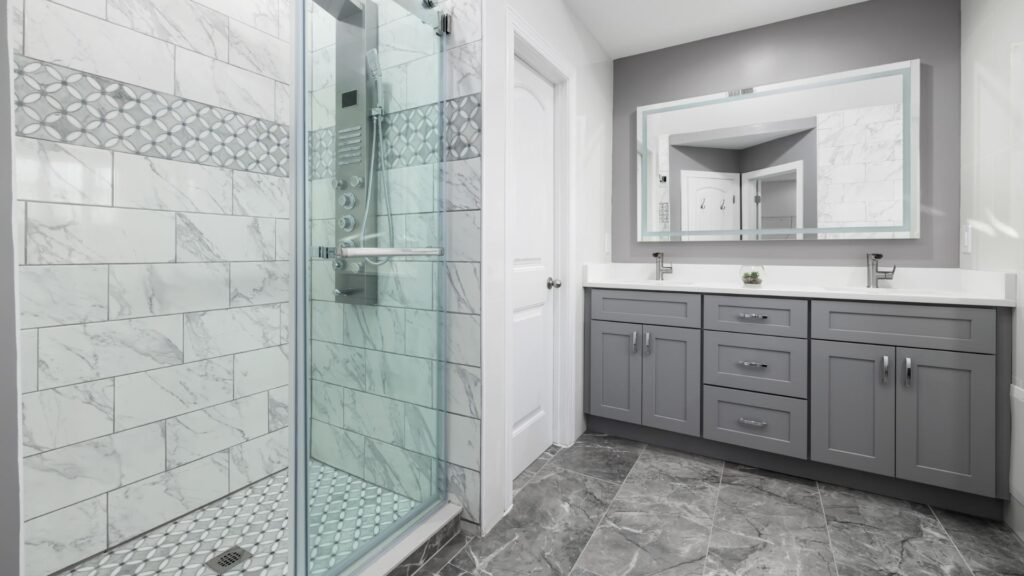
Pros And Cons Of Seratone Bathrooms
When considering Seratone for your bathroom walls, it’s important to weigh both the benefits and the potential drawbacks. While Seratone has become a popular choice in New Zealand homes due to its durability and ease of use, it may not suit every project or design preference. Below is a breakdown of the pros and cons to help you decide if it’s the right fit for your renovation or new build.
Pros Of Using Seratone In Bathrooms
- Easy To Clean
Seratone panels have a smooth, non-porous surface that makes cleaning simple and quick. There are no grout lines like in traditional tiled walls, which means less risk of mold and mildew buildup. A soft cloth and mild detergent are usually enough to keep the panels looking fresh. - Fast Installation
One of the standout benefits of Seratone is how quickly it can be installed. Unlike tiles, which require time-consuming grouting and drying, Seratone panels can be mounted directly to the wall framing or backing boards. This makes it a convenient option for both DIYers and professionals looking to save time. - Moisture Resistant
Designed for wet areas, Seratone is highly resistant to water and humidity. It’s made specifically for environments like bathrooms, laundries, and even shower enclosures. With proper sealing and installation, the panels create a barrier that helps prevent water damage to the underlying structure.
Cons Of Using Seratone In Bathrooms
- Less Customizable Than Tiles
While Seratone is available in a range of finishes and colours, it doesn’t offer the same design flexibility as tiles. If you’re aiming for intricate patterns, custom shapes, or textured surfaces, tiles may be a better option. Seratone tends to suit minimalist or modern styles rather than detailed or traditional designs. - Joints May Collect Grime If Poorly Installed
Although the panels themselves are easy to maintain, the joints between them can become problem areas if not sealed correctly. Dirt and moisture may accumulate in these spaces over time, leading to discoloration or mold. This makes professional installation, or careful attention to sealing, a key part of the process.
Seratone bathrooms offer a practical, affordable, and modern solution for homeowners across New Zealand. The material excels in function and maintenance, making it ideal for busy households. That said, like any material, it comes with limitations. If you’re after speed, water resistance, and a clean look, Seratone is worth considering. Just make sure it’s installed with care to avoid issues down the line.
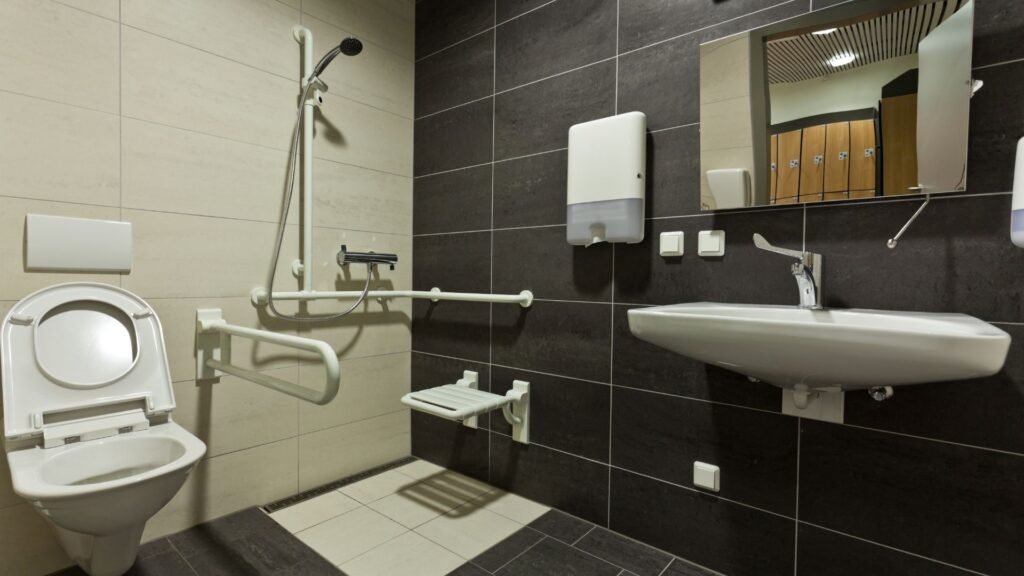
Where To Buy Seratone Panels In NZ
If you’re planning a bathroom upgrade or full renovation, knowing where to buy Seratone panels in NZ is just as important as choosing the right style. Seratone is available at several trusted suppliers across the country, both in-store and online. Whether you’re a DIY enthusiast or working with a professional installer, sourcing your panels from a reliable supplier ensures you get genuine products, support, and delivery options tailored to your project.
Recommended Suppliers
Three major retailers in New Zealand consistently stock Seratone panels:
- Mitre 10 – Known for a wide range of building materials and expert staff, Mitre 10 is a convenient option for homeowners looking for quality Seratone bathroom panels. Some stores offer display setups so you can see finishes in person.
- Bunnings Warehouse – Bunnings carries selected Seratone lines and may offer competitive pricing. Check availability online before visiting, as product stock can vary between locations.
- PlaceMakers – A reliable choice for both trade and public customers. PlaceMakers has access to the full range of Laminex Seratone products and can assist with special orders or large quantities.
Buying Tips
To avoid delays or installation issues, follow these steps when purchasing Seratone bathroom panels in NZ:
- Measure your space accurately – Knowing your wall dimensions helps you order the correct number of panels, trims, and accessories.
- Match your trims and joints – Seratone installations require specific trims for corners, edges, and joins. Make sure these are compatible with your panel style and colour.
- Ask about delivery or pickup – Some suppliers offer local delivery or click-and-collect. For large projects, home delivery is often the most efficient option.
- Request product brochures or samples – This helps you compare finishes and make informed design choices before committing to a full order.
Support From Laminex Representatives
Laminex, the manufacturer of Seratone panels, offers support through local representatives and showrooms. If you’re unsure about colour options, product availability, or installation advice, a Laminex rep can provide expert guidance. Visiting a showroom also gives you the chance to see larger samples and finished wall installations in person.
By sourcing your Seratone panels from reputable NZ suppliers and following the right steps, you’ll ensure a smooth buying process that supports a high-quality bathroom finish.
Thinking about upgrading your bathroom with Seratone panels? Visit us to explore options, get expert advice, and start your renovation the right way.
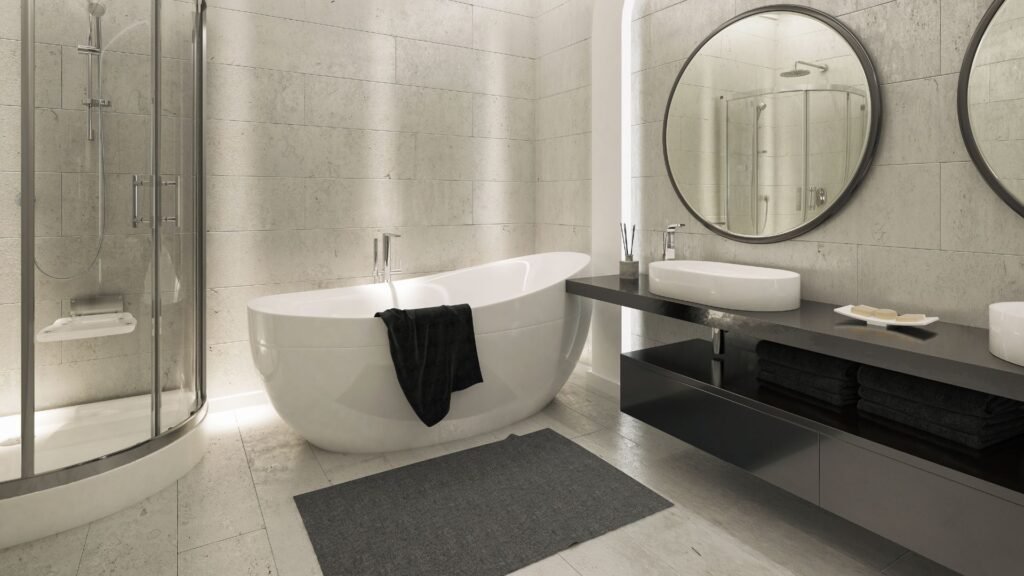
FAQs: About Seratone Bathrooms In NZ
What is Seratone, and how is it used in NZ bathrooms?
Seratone is a high-pressure laminate wall lining used in wet areas like bathrooms. In New Zealand, it’s a popular alternative to tiles because it’s water-resistant, easy to clean, and quick to install.
Is Seratone suitable for shower walls?
Yes, Seratone is designed for high-moisture areas, including showers. When installed correctly with waterproof joins and sealants, it provides a durable and hygienic surface.
How much does it cost to install Seratone in a bathroom?
Prices vary based on the design, size of the bathroom, and whether you DIY or hire a professional. On average, expect to pay $120–$200 per sheet, plus installation costs.
Can I install Seratone panels myself?
Yes, many homeowners choose to DIY. However, precise measuring and proper sealing are essential. If you’re unsure, hiring a licensed installer is recommended to avoid moisture issues.
How do Seratone panels compare to traditional tiles?
Seratone is faster to install, requires no grouting, and is easier to maintain than tiles. While tiles offer more design flexibility, Seratone is ideal for a sleek, modern finish on a budget.
What finishes and colours are available for Seratone?
Seratone panels come in various colours, textures, and finishes—ranging from high-gloss whites to neutral tones and natural looks like stone or timber effects.
Where can I buy Seratone bathroom panels in NZ?
You can purchase Seratone panels from major building suppliers such as Mitre 10, Bunnings, PlaceMakers, and Laminex distributors across New Zealand.
Is Seratone safe and compliant with NZ building codes?
Yes, when installed according to manufacturer instructions, Seratone panels meet New Zealand’s building standards for wet areas.
How do I clean and maintain Seratone bathroom panels?
Use a soft cloth or sponge with mild detergent. Avoid abrasive cleaners or scouring pads, as these can damage the surface. Regular cleaning prevents buildup in joins.
Can Seratone be repaired if damaged?
Minor surface scratches may be repaired using polish or wax, but deeper damage usually requires panel replacement. Always keep spare panels or finishes if possible.
Conclusion
Seratone bathrooms offer a smart and reliable solution for New Zealand homes, combining style, durability, and ease of maintenance. With their moisture-resistant design and fast installation process, Seratone panels are especially suited to the local climate, where high humidity and temperature changes can impact traditional materials. Their clean, modern look fits a wide range of interior styles, making them a practical choice for both new builds and renovations. If you’re planning to upgrade your bathroom and want something that balances quality, affordability, and visual appeal, Seratone is worth considering. Visit Laminex NZ to browse available designs or contact a local installer to get expert advice tailored to your project.
About the Author:
Mike Veail is a recognized digital marketing expert with over 6 years of experience in helping tradespeople and small businesses thrive online. A former quantity surveyor, Mike combines deep industry knowledge with hands-on expertise in SEO and Google Ads. His marketing strategies are tailored to the specific needs of the trades sector, helping businesses increase visibility and generate more leads through proven, ethical methods.
Mike has successfully partnered with numerous companies, establishing a track record of delivering measurable results. His work has been featured across various platforms that showcase his expertise in lead generation and online marketing for the trades sector.
Learn more about Mike's experience and services at https://theleadguy.online or follow him on social media:

